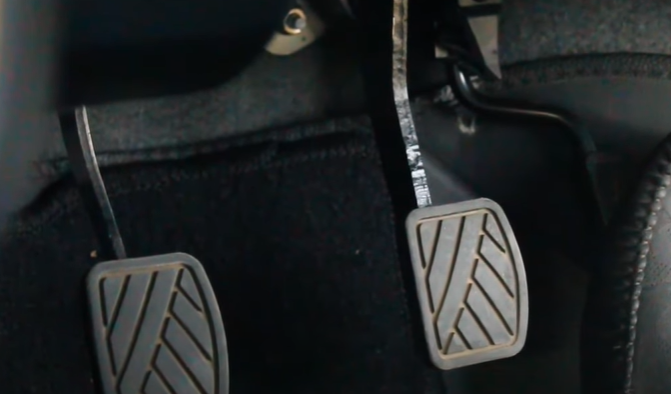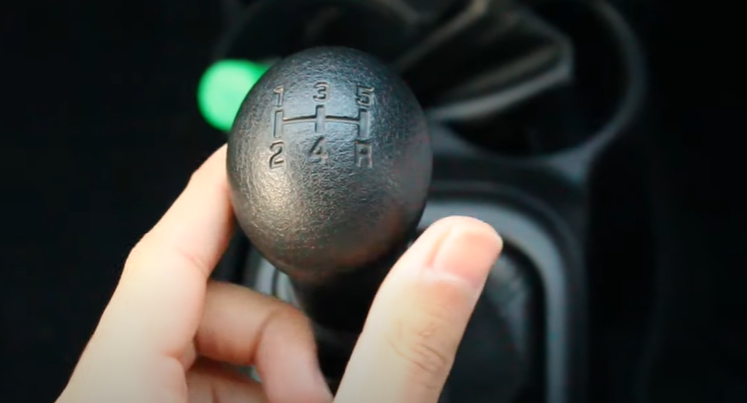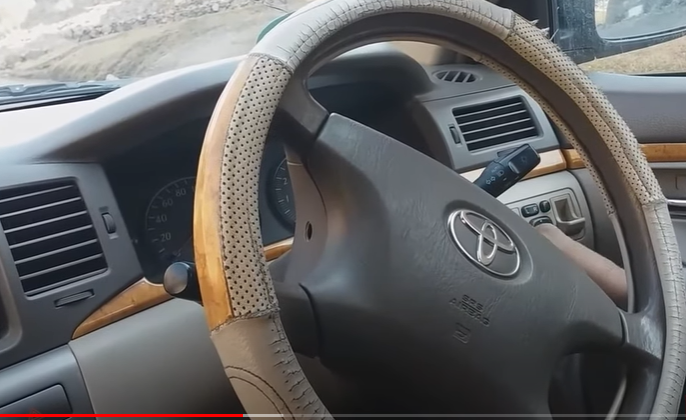How To Launch A Manual Car
Steps to Launching a Manual Car
- Find a level, dry and secure surface. We suggest using a drag strip!
- Turn off the traction control.
- Clutch In and Select First Gear.
- Utilize throttle until you have reached the desired RPM for launch.
- Release the clutch and adjust it while shifting the throttle to improve the clutch grip and reduce slippage.
- Change Gears.
How Can You Achieve An Ideal Launch In A Manual Vehicle?
Before we get into the specifics of getting the best launch possible in a manual car, we must first go over the fundamentals. Manual transmission or a stick shift requires drivers to change gears manually by engaging and deactivating the clutch pedal while using the lever for gears. Contrary to automatic transmissions, gears allow drivers to have more control over their vehicle’s performance.
Get Acquainted with the Clutch
The clutch is an essential part of ensuring an effortless launch. It is the device that connects and disconnects the engine’s energy to drive the wheel. For starting, ensure that you are comfortable in the driver’s seat and have your feet on the pedal of your clutch. The clutch pedal should be fully pressed to the floor, and take note of the range of movement. Knowing the point of engagement for the clutch can be essential to ensure a successful launch.
1. Find the Bite Point
The bite point is the location where the clutch is engaged in conjunction with the engine. This is the point at which the clutch starts transmitting energy to the wheels. To find the bite point, it requires an amalgamation of practice and a sense. The clutch pedal should be released slowly, and apply gentle pressure to your accelerator pedal. Be aware of the engine’s response, along with the smoothness and ease of shift.
2. Balancing Act – Accelerator and Clutch
For a smooth launch, you must find the perfect balance between the clutch and accelerator pedals. When you let off the clutch, slowly apply pressure to the accelerator pedal in order to match the engine’s RPM to what speed wheels are turning. The smooth coordination of the two inputs is essential to prevent stalling or abrupt motions.
3. Practice Makes Perfect
The art of successfully launching manually-driven vehicles requires patience, practice, and perseverance. Find a parking area that is free or a peaceful road where you can practice safely your launches. Test various clutch engagement points and methods of acceleration to gain a better understanding of the characteristics of your car. Through time and practice, you’ll be able to get a feel for the perfect start.
4. Riding the Clutch
A common error that many novices do one of the most common mistakes beginners make is “riding the clutch.” This is the practice of keeping your foot firmly on the clutch pedal when driving. Not only does this place excessive stress on the mechanism of the clutch, it can also lead to higher fuel consumption and lower performance. Be sure to release fully the clutch pedal once you have changed gears.
5. Revving Too High or Too Low
If you rev the engine too much without properly releasing the clutch could result in an abrupt surge of power which causes the tire to spin or the car to move forward. However, when you rev your engine too low, not having enough gas in the tank can result in the car stalling. The proper balance between clutch engagement as well as accelerator input is essential for a smooth start.
How Can You Run A Manual Car?
Before we get into the more the latest racing methods, we need to master the basics of manual transmission. Manual cars called a ‘stick shift,’ need a driver to shift gears manually with a clutch pedal as well as a lever for gears. In contrast to automatic vehicles, where the transmission handles the work for you mastering manual transmissions provides you to have greater control and speed during races.
Choosing the Right Manual Car
To maximize your potential in racing to the fullest, choosing the correct manual vehicle is crucial. Factors such as engine horsepower as well as weight distribution, and handling characteristics play an important impact on your car’s ability to perform on the track. You should consider choosing a car with responsive steering as well as strong acceleration, and an appropriately tuned suspension system to make your racing experience more enjoyable.
Mastering the Clutch
The clutch is a vital part of racing in manual because it facilitates smooth gear shifts and effective power delivery. For optimal launch and gear shifts, you should practice the following methods:
- Engage Point Awareness Acquaint yourself with the engagement point. This is the point the clutch begins to transfer power. When you are aware of this point, you can make precise gear shifts and avoid any unnecessary slippage of the clutch.
- Rev-Matching involves shifting the throttle in a way that matches the engine’s speed to what the slower gear is doing. This method helps to ensure stability when downshifting by preventing wheel lock-up and aiding in smooth transitions.
- Feathering the clutch Feathering the clutch is the process of partially engaging and disengaging the clutch in high-speed turns to ensure the wheelspin from becoming excessive. This technique helps achieve the best balance and control.
Shifting Gears With Delicate

A smooth gear shift is a key element of a successful manual race. Here are some suggestions to improve your skills in this area:
- Timing is crucial: Make sure that you time your gear’s shift to match the peak of engine torque and power. This will ensure maximal acceleration and avoids putting unnecessary strain on the engine.
- Smooth Transitions: Make the gear change smoothly by applying constant pressure to the gear lever and clutch. Rapid shifts can upset the vehicle’s balance and could affect the performance of your race.
- Heel-Toe Technique Advanced racers typically use the heel-toe method to reduce their speed while braking. This method involves using your right leg to brake and the left foot to shift the throttle to ensure smooth and synched downshifts.
The Art of Cornering
Cornering is a crucial factor in racing performance, And mastering this skill will give you an edge. Be aware of these tips for approaching corners:
- Braking Points: Find the most effective brake points prior to turning corners to keep control and prevent excessive speed. You should brake with a straight line prior to entering the corner in order to increase stability.
- Apex Management: The apex is the point where a corner is at its midpoint. To optimize your running line, you should aim to hit the apex in a precise manner. This will allow for a quicker acceleration and decreases the amount of time you spend in the corner.
Can You Launch Control A Manual Car?

Before we go into the intricacies of controlling an auto using launch control, we must first understand the concept behind launch control. Launch control is a characteristic present in high-performance cars with the latest electronic systems. It’s designed to maximize acceleration and improve traction during the standing start.
Typically, launch control functions by carefully regulating the engine’s RPM (revolutions per minute) and power distribution on the wheel. This system assures maximum traction and reduces wheel spin, which allows the vehicle to accelerate easily and smoothly. Launch control systems differ among brands and models. However, they are generally designed to improve efficiency while maintaining the reliability that the drivetrain has.
Manual Transmission and Launch Control
Now, the question is whether you can use launch control when you have an automatic transmission. It’s not possible, in fact. Launch control systems were primarily designed for vehicles that have semi-automatic or automated transmissions. Manual transmissions, on the contrary, require a different method to ensure a successful launch.
In a manual vehicle, the ability to launch effectively requires a mix of skilled controlling the clutch, modulating throttle, and precise gear shifts. Launch control systems excel in directing power flow in automatic transmissions, but the complex dance between the inputs of the driver and the clutch’s activation in manual vehicles is not possible to replicate with these systems.
The Role of the Driver

When you’re in charge of manual vehicles, the driver plays an essential role in the execution of an effective launch. Manual car launches require several coordinated actions that are all adjusted to provide the highest possible acceleration while not causing excessive strain or harm to parts of the drivetrain.
To start a manual vehicle effectively, the driver has to master the art of the clutch’s engagement. By carefully balancing the clutch pedal in conjunction with the throttle input, the driver is able to control the transmission of power directly to the vehicle’s wheels making for a smooth and controlled launch. This is a complex process that requires training along with experience, as well as an in-depth understanding of the characteristics of the vehicle.
Enhancing Performance in Manual Cars
Although launch control might not work with the manual gearbox, there are many methods and adjustments that could improve the performance of a manual vehicle during launch. Here are some notable things to think about:
Upgraded Clutch Systems
Installing a clutch that is specially designed for high-performance use can dramatically improve the performance of your launch. These clutches provide better grip, more rapid engagement, and better heat dispersal, making it easier for transmission of power to wheels.
Lightweight Flywheels
Replacing the original flywheel with a lighter alternative could reduce the mass of rotation and enhance engine performance. This alteration improves the response of the throttle and allows your engine to rev faster, leading to better capability to launch.
Proper Launch Techniques
The technique of launch is essential to achieve optimal performance when driving a manual car. It is about finding the perfect balance between throttle engagement, clutch modulation, as well as gear changes. Training and experience are essential to hone this ability.
FAQs
How fast do Street Outlaws cars go in the 1/8 mile?
Street Outlaws cars can cover the 1/8 mile distance in approximately 3 to 4 seconds.
What’s the average speed of Street Outlaws cars in the 1/8 mile?
The average speed of Street Outlaws cars in the 1/8 mile can be around 130 to 150 mph.
What’s the quickest time recorded by Street Outlaws cars in the 1/8 mile?
The quickest times recorded by Street Outlaws cars in the 1/8 mile can be in the low 3-second range.
How does the 1/8 mile time compare to the 1/4 mile time for Street Outlaws cars?
Street Outlaws cars generally achieve quicker times in the 1/8 mile compared to the 1/4 mile due to the shorter distance.
What factors contribute to the fast times in the 1/8 mile for Street Outlaws cars?
Factors include powerful engines, advanced tuning, lightweight construction, and specialized tires that enable rapid acceleration.
Do all Street Outlaws cars have similar 1/8 mile times?
No, there can be variations in 1/8 mile times among Street Outlaws cars depending on factors like modifications, horsepower, and tuning.
Are there any specific records for 1/8 mile times in Street Outlaws racing?
Street Outlaws events and unofficial races may have records for 1/8 mile times, but these can vary widely based on the event and car specifications.


















